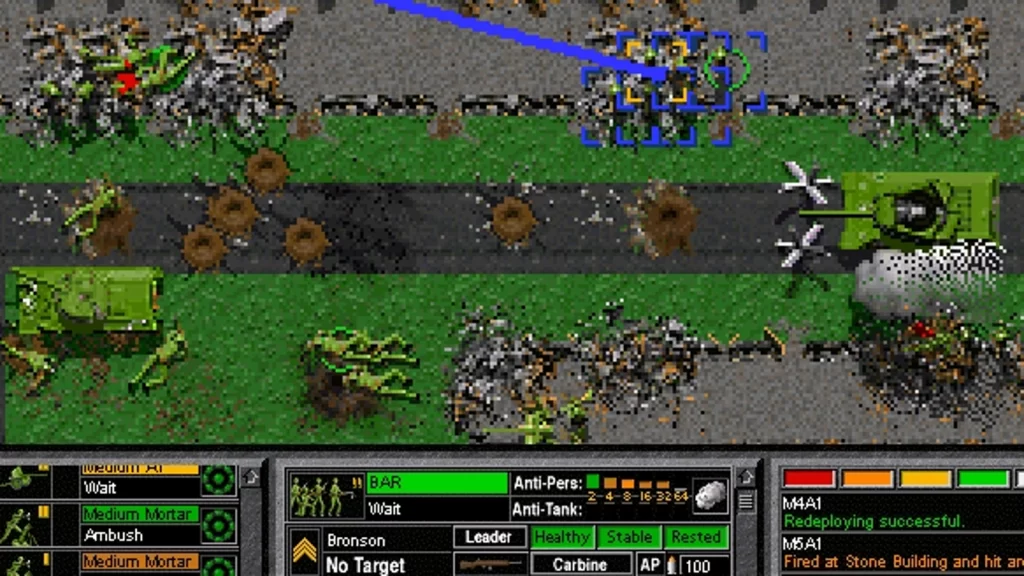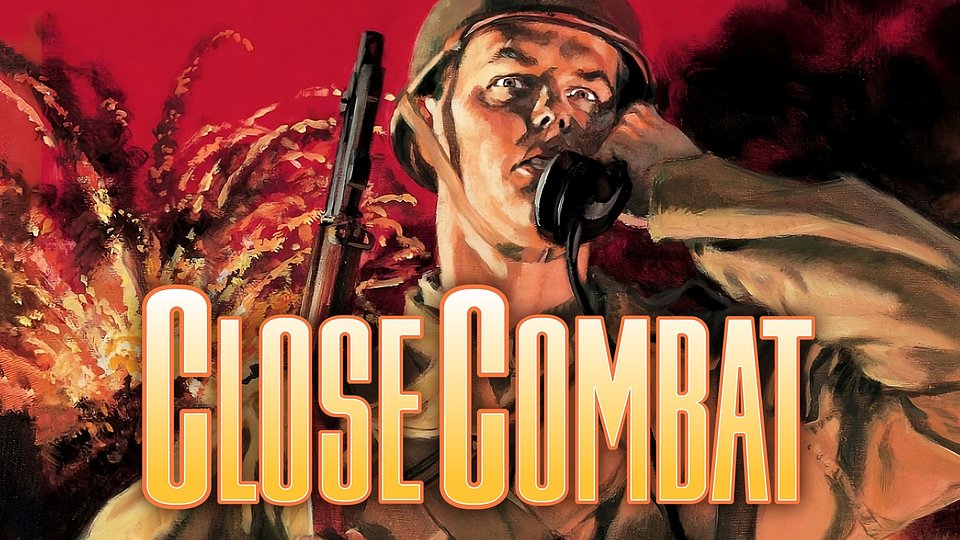Developer: Atomic Games
Publisher: SNEG
Genre: Strategy, WWII, Simulation,
Release Date: May 15th, 2024 (July 1996)
Price: $5.99
Where to buy: Here!
Released in 1994, Close Combat wasn’t your typical strategy game. While titles like Command & Conquer offered a more big-picture, base-building approach, Close Combat zoomed right in, placing you in the boots of a company commander in the throes of brutal infantry combat. This article will explore what made Close Combat a unique and enduring classic for PC gamers.
Firstly, Close Combat emphasized the chaos and uncertainty of real warfare. Gone were the clean lines and predictable unit behaviors of traditional wargames. Instead, units had a mind of their own, sometimes refusing orders or taking cover instead of charging. Friendly fire was a constant threat, and fog of war obscured enemy positions, forcing players to rely on recon and adapt to the situation. This element of unpredictability created a tense and immersive experience, unlike anything seen before.

Secondly, Close Combat didn’t shy away from the harsh realities of war. Soldiers weren’t expendable resources; they were individuals with morale that could plummet under withering enemy fire or mounting casualties. This focus on the human cost of war added a layer of weight to each decision, making victories bittersweet and defeats genuinely crushing.
Despite its top-down, isometric perspective, Close Combat offered a surprising amount of tactical depth. Terrain played a crucial role, with buildings providing cover and forests hindering movement. Players had to carefully consider flanking maneuvers, suppressing fire, and utilizing different unit types for maximum effectiveness. Mastering these tactics was essential for overcoming entrenched enemies and emerging victorious.

Of course, Close Combat wasn’t without its flaws. The early games in the series were criticized for their simplistic graphics and occasional AI quirks. However, these shortcomings were outweighed by the innovative gameplay and the sheer intensity of the battles.

Close Combat’s legacy lives on. It inspired a generation of strategy games to focus on the small-unit experience, and its emphasis on realism and unit morale continues to resonate with players today. While the graphics might seem dated by modern standards, Close Combat remains a rewarding and thought-provoking experience for those seeking a taste of the brutal realities of war.
The previous section highlighted the core strengths of Close Combat’s gameplay. Now, let’s delve deeper into the specifics that made maneuvering your troops such a tense and tactical experience.
Command Structure: Close Combat didn’t employ a complex unit selection system. Instead, you commanded squads and platoons as a whole, issuing orders through a simple interface. This streamlined approach emphasized overall strategy over micromanaging individual soldiers.
Fire and Movement: The key to success in Close Combat was mastering the dance of fire and movement. Suppressive fire from machine guns pinned down enemies, allowing your rifle squads to advance and flank their positions. Learning to utilize different unit types for specific roles – rifles for assault, machine guns for suppression, mortars for indirect fire – was crucial for a well-rounded attack.
Terrain and Cover: The environment played a vital role in Close Combat. Buildings, hedgerows, and even shell craters provided vital cover, allowing your troops to advance without getting shredded by enemy fire. Conversely, open fields became killing zones, forcing careful planning and use of smoke grenades for concealment. Learning to read the battlefield and exploit its features became second nature for seasoned Close Combat commanders.
Fog of War and Recon: Unlike some strategy games where everything is visible from the start, Close Combat shrouded much of the map in a literal fog of war. Enemy positions were only revealed when your troops made visual contact or through recon patrols. Sending out scouts was a gamble, as they risked being exposed to enemy fire. This uncertainty added a constant layer of tension, forcing players to make decisions with limited information.
Unit Morale and Experience: As mentioned previously, Close Combat wasn’t just about numbers. Each soldier had morale that could deteriorate under heavy fire or mounting casualties. A panicked unit might disobey orders or flee the battlefield altogether. Conversely, veteran troops with high morale were more likely to stand their ground and fight fiercely. This focus on unit morale added a human element to the cold calculations of war.
Campaign System: Later entries in the Close Combat series introduced dynamic campaigns that spanned multiple battles. Victories in one battle would grant you advantages in the next, such as retaining veteran troops or capturing strategic locations. Defeats, however, had consequences as well, with depleted units and lost territory. This campaign system added a sense of weight and consequence to each tactical encounter, making victories all the sweeter and defeats more impactful.
With memories as clear as untouched pond water, you might wonder how well this port holds up. Having clocked in several hours as both a youngster and an adult, I can assure you it retains the intensity and fast pace of the original combat sim. It offers what fans of the genre crave: hours of challenging and charming gameplay. For many Windows fans at the time, Close Combat was a revelation. Although it might be considered a diamond in the rough by modern standards, once you adjust to its playstyle, it becomes one of the game’s best aspects.
In conclusion, Close Combat’s gameplay wasn’t just about issuing orders and watching units clash. It was a constant interplay between strategy, tactics, and the unpredictable nature of the battlefield. Mastering these elements and overcoming the odds with your small band of soldiers was what made Close Combat such a rewarding and enduring PC gaming experience.


